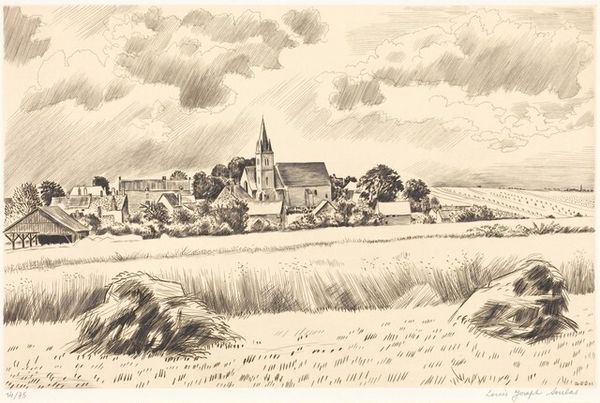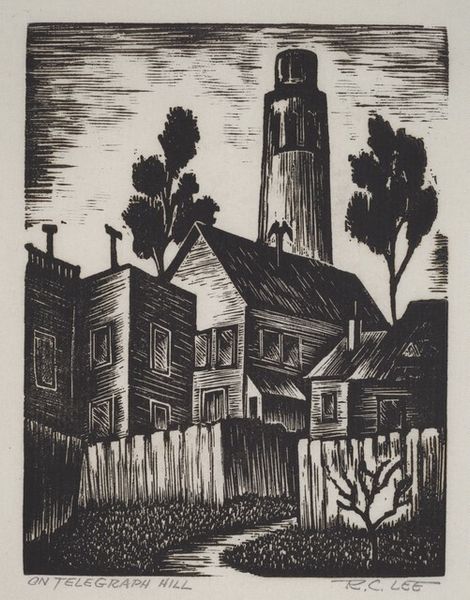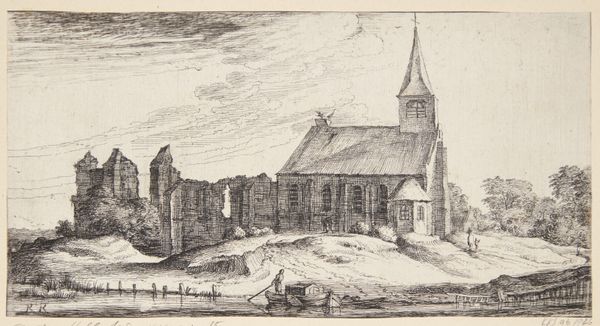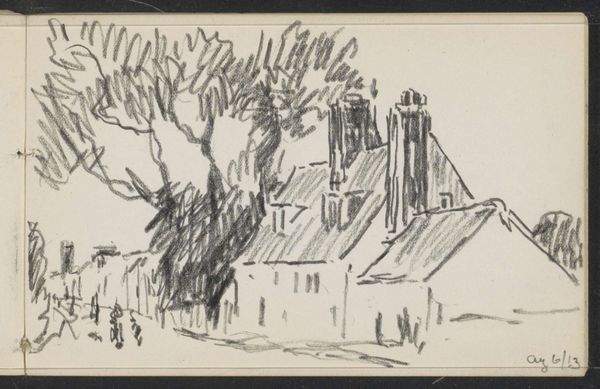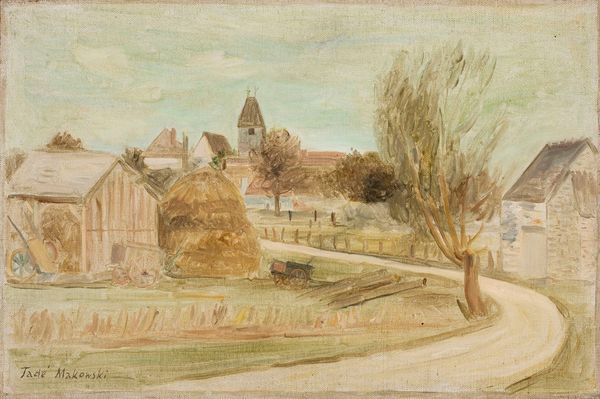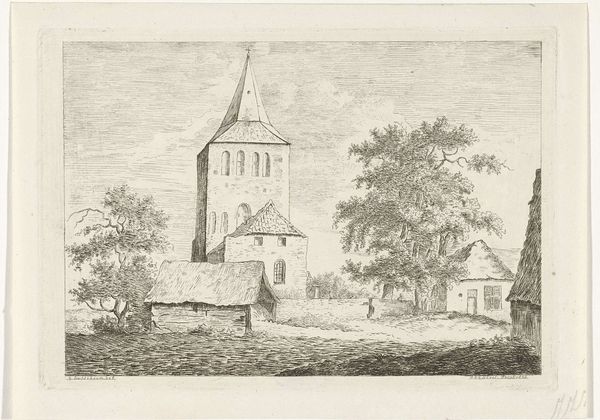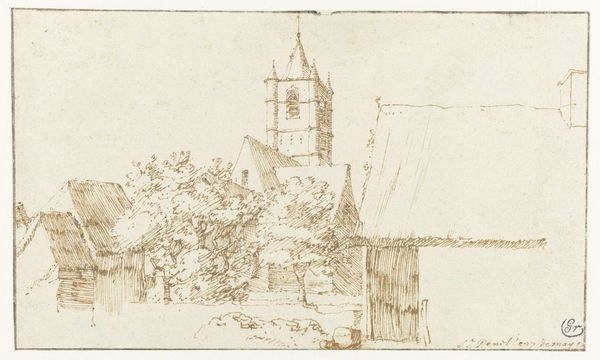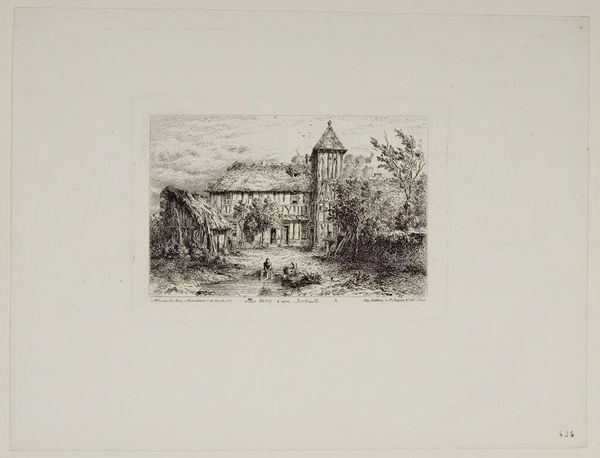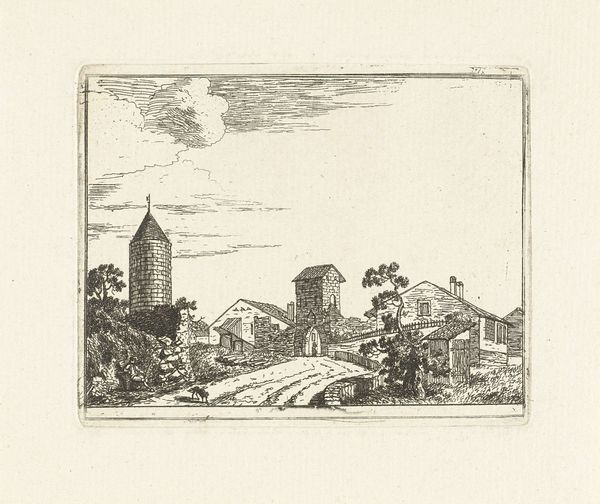
drawing, print, ink
#
drawing
#
pen drawing
# print
#
landscape
#
ink
#
cityscape
#
realism
Dimensions: plate: 23.8 x 34.8 cm (9 3/8 x 13 11/16 in.) sheet: 33 x 50.2 cm (13 x 19 3/4 in.)
Copyright: National Gallery of Art: CC0 1.0
Curator: This is Louis Joseph Soulas's "Le Clocher de St. Jean de Brayo," created in 1953, employing ink in a print medium. Editor: Well, immediately, I get a feeling of quiet, a sort of still Sunday afternoon kind of vibe. The landscape feels very accessible, you know? Curator: It’s interesting that you say accessible. Note how Soulas’s chosen method, the print, enables distribution. Consider, prints democratize art, making it attainable beyond a singular patron. How might that have shaped Soulas’s view of subject matter, turning toward such common scenes? Editor: Hmmm. Good point! But as an artist, when I see the textures in the sky, it evokes my grandfather's attic on a rainy day: dusty paper and charcoal. You see, the artist worked laboriously, through lines and strokes. The tower looms, indifferent to its inhabitants, or any artist for that matter. I see time standing still and passing right through everything. Curator: Absolutely, we observe the intersection of labor and time you astutely point out. His use of ink in these repeatable images creates a market, generating art both personal and commodified. Editor: The strokes, right? Like tiny bricks building the whole scene! He almost seems to be rebuilding his childhood bit by bit on the page. Curator: Consider, how does he capture, not just the literal landscape, but the *idea* of France—its enduring architecture contrasted against ephemeral nature—and mass producing it, placing a very specific meaning into distribution? Editor: Ah, exactly. Even the lines he makes of the ground almost cradle this feeling of home, or homecoming! He wasn't making a mere representation; he recreated belonging itself, distributed in copies... interesting paradox. It’s almost as though art becomes both the echo and the vessel of memory. Curator: Precisely. Examining art is more than analyzing aesthetic experience, its interrogating production, consumption and social position. I appreciate how this specific piece encourages a consideration of landscape, memory, and commodity. Editor: Yes, and for me it comes down to this: in every print, he sent out little fragments of himself—a very strange act. Almost like a small piece of your soul went out with it.
Comments
No comments
Be the first to comment and join the conversation on the ultimate creative platform.
